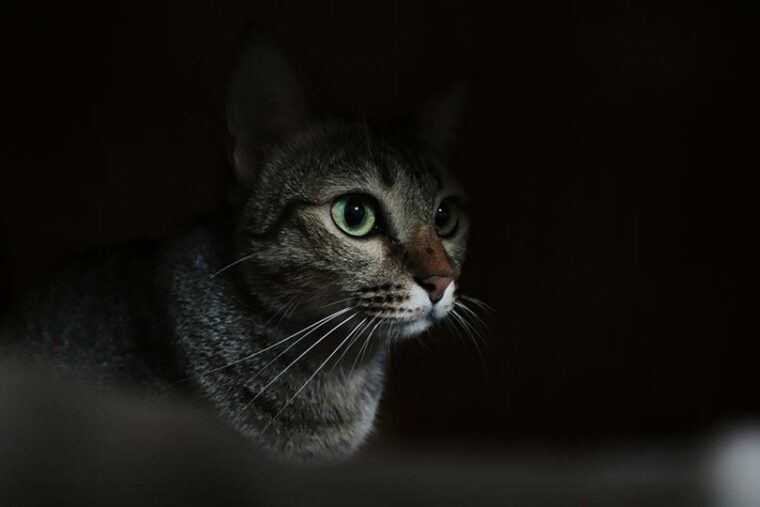
Contrary to popular belief, cats can’t see very well in total darkness but can see extraordinarily well when there’s almost no light. Cats are crepuscular creatures, meaning they prefer to hunt in the hours around dusk and dawn; their eyes are optimized to give them an advantage when prowling in low light.
Cats can generally see about six times better than people in the wee hours and navigate quite effectively with just a bit of light.1 But most rely on hearing, smell, and subtle vibrations picked up through their whiskers to navigate in total darkness. Cats’ eyes are optimized to pick up light and send that information efficiently to be interpreted by the brain. Keep reading to learn more about cats’ eyes and the wonders of feline night vision.
How Does Feline Eye Structure Boost Night Vision
Cats’ eyes are optimized to pick up light and send that information efficiently to be interpreted by the brain. Several parts of the eye work together to give cats stunning nighttime visual acuity.
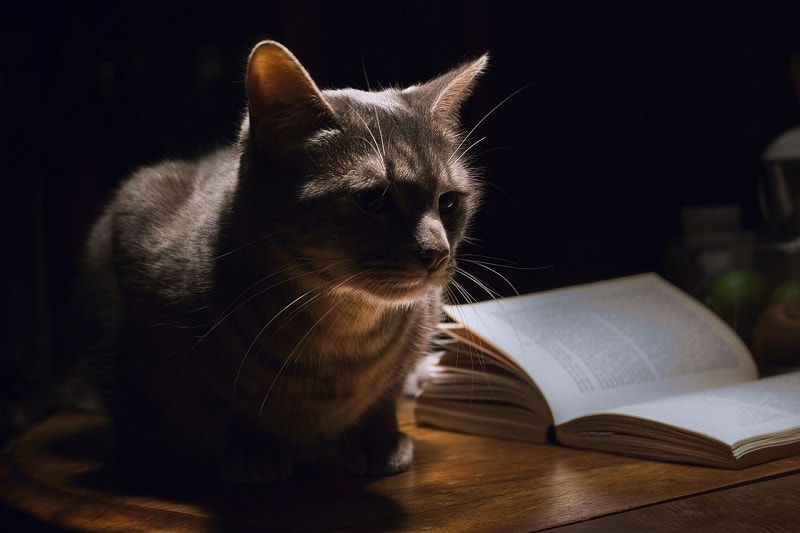
Pupils
Cats’ pupils narrow to small vertical slits in bright sunlight to reduce the light that enters their eyes. But in low-light conditions, cats’ pupils open wide to allow more light to hit their retinas; it’s why they can see so well on moonlight nights.
Tapetum Lucidum
Feline eyes also feature a special membrane, the tapetum lucidum. It’s a thin layer that sits behind the retina and reflects light to give kitties a huge edge when searching for prey around dusk and dawn. It’s one of the major reasons cats require far less light to see than humans. Dogs, ferrets, and horses also have similar reflective membranes in their eyes.
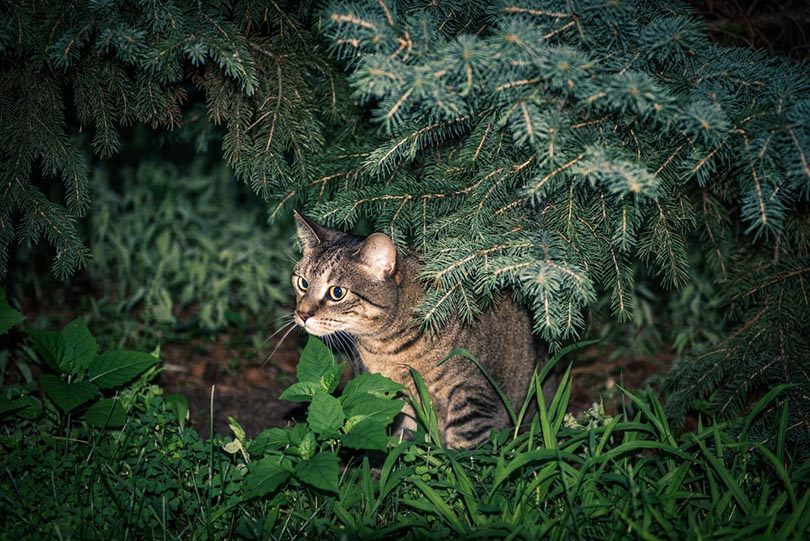
Rods
Cats have two types of light sensitive cells in the retina (photoreceptors): cones and rods. Cones are responsible for color vision and require higher light intensity than rods to function. On the other hand, rods are optimized for low-light vision and are sensitive to peripheral and subtle movements.
Cats are far better than humans at seeing quick movements by fleeing rodents and birds. Humans need 6 times more light than cats to see. Rods aren’t color sensitive, so the images they pick up are interpreted in shades of gray, giving cats fantastically clear vision when there’s not much light.
Corneas
Cats have large corneas, which are clear, smooth surfaces that cover the outside of the eyes. Because cats have such large corneas, more light can enter their eyes, contributing to their outstanding low-light vision.
What About Distance Vision?
Cats don’t have great distance vision. They need to be about 20 feet away to see something that a human with perfect vision could see from a distance of about 150 feet. At the same time, cat’s ability to focus on objects isn’t that great, either. Their special anatomy gives them a limited range of lens adjustment, and cats can’t focus on things close by or too far away. Cats rely on hearing and smell to locate far-off prey and turn to sound and vibration for up-close encounters.
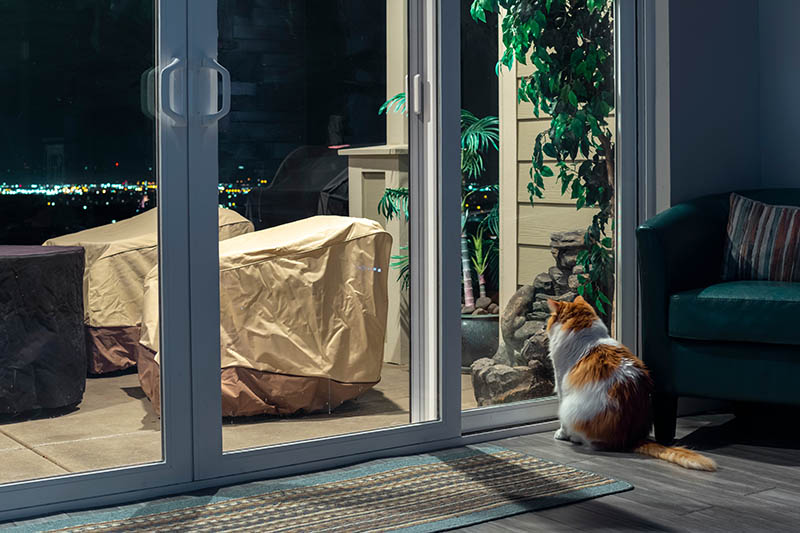
Do Cats’ Pupils Only Dilate at Night?
No! Cats’ pupils can dilate in response to light and their emotional status, including stress, excitement, fear, and even illness. The pupils of cats during playtime sometimes dilate out of sheer excitement. But it can also be a sign that a cat is anxious or scared, particularly if they’re also crouching or trying to make themselves appear smaller by wrapping their tail tightly around their body.
Fixed and dilated pupils in cats is a cause of concern, so contact your vet if you think your cat’s pupils do not respond to light as they should.
Are Cats Color Blind?
Cats can see colors but probably can’t see the same range of colors as humans. Photoreceptor cells called cones are responsible for picking up colors and sending the relevant information to the brain for interpretation.
Both humans and cats are considered to be trichromats; however, we don’t see colors in quite the same manner. Humans can clearly differentiate blues, greens, and reds. Cats are thought to easily tell the difference between green and blue, but the ability to see red is not clear. Since cats have fewer cones than humans do, cat’s color vision is thought to be poorer than in humans.
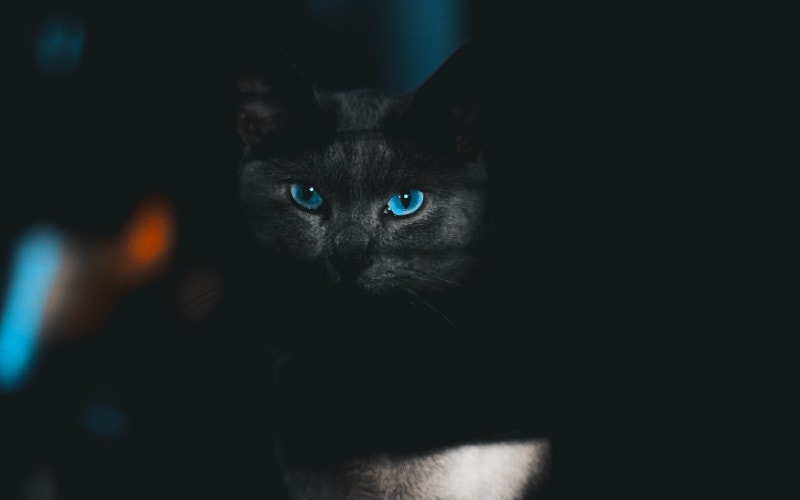
How Do Cats Recognize Other Cats, People, and Places?
Cats typically don’t use sight to recognize familiar people, places, or animals. Most rely primarily on smell to identify companions. Your cat’s sense of smell is thought to be about 14 times better than yours, and cats even have special organs dedicated to picking up pheromones, chemical messengers loaded with information about an animal’s health, emotional status, and reproductive availability.
Cats have scent glands on their chins, cheeks, above their eyes, and around their ears. They’re also found on the bottoms of their paws and around their tail. When cats meet, they greet each other with a good information-gathering sniff. Cats also recognize their favorite people by smell and sound. When cats scratch, they leave pheromones that linger and provide your cat with a warm sense of comfort.
Conclusion
Cats technically can’t see in complete darkness, and their eyes require some light to see. However, cats can see extraordinarily well in dim conditions, which gives them a huge advantage when hunting around dusk and dawn. Cats’ wide corneas allow lots of light to enter their eyes, and they can even see some frequencies of ultraviolet light.
Their pupils open to full circles to permit as much light as possible to hit their retinas. Although aspects of their vision are impressive, cats have trouble seeing up close and from a distance. Most rely on smell and sound to recognize familiar people and places.
Featured Image Credit: Mookmixsth, Shutterstock







